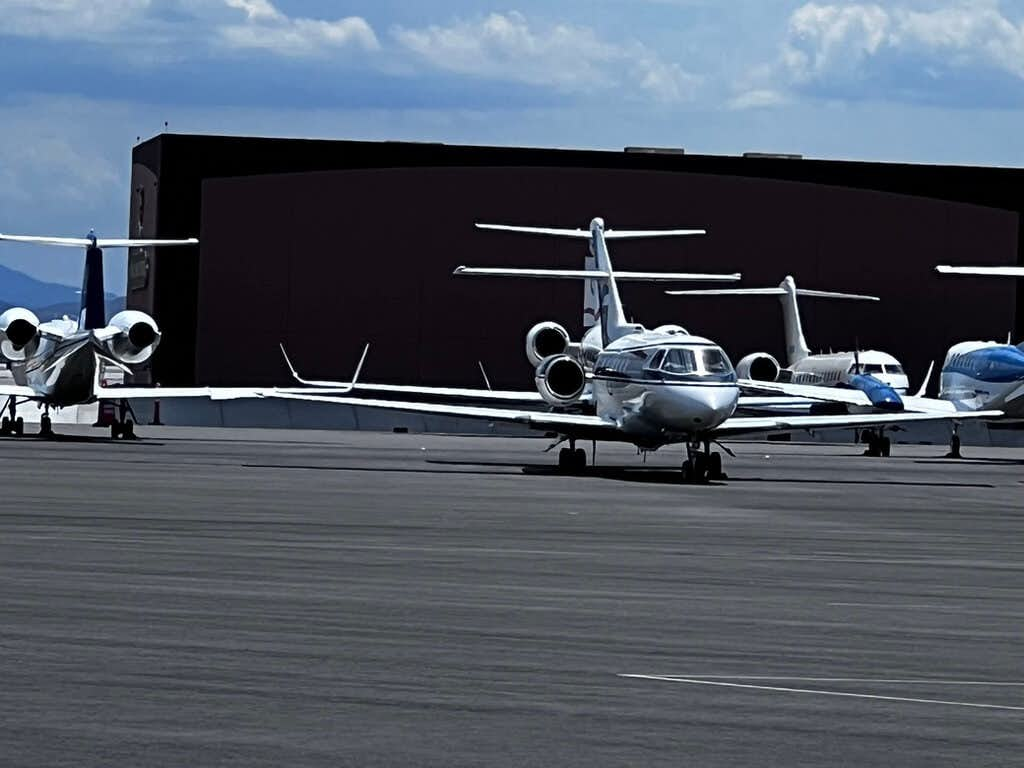
Despite sagging demand in the second half of last year, private jet flights in the U.S. set records overall and for charter and fractional operators.

Total U.S. private jet flight hours, as well as charter and fractional operator flight hours, again set records in 2022, according to data from Argus TraqPak.
The stellar results come despite a chill in the second half of the year. The current climate is reflected in Argus’ 2023 forecast predicting a 1% decline.
Looking back to last year, total flight hours increased 7.7% to 5,502,093 hours across all categories, Part 91, 91k, and 135.
Combined, Part 91k and 135 operators saw flight hours increase by 5.7% to 2,949,189 flight hours.
Part 91 flight hours increased by 10.0%.
Part 91 reflects private flights for aircraft owners, 91k is fractional operators, and 135 is charter flights, including jet cards.
We combine 135 and 91k as the tracking is operator-specific. Totals for 91k fractional operators such as NetJets, Flexjet, Airshare, and Jet It includes Part 135 flights as well.
It’s also important to note 135 operations are aircraft specific. That means some of the flight hours tracked under these aircraft could be for Part 91 flying.
That’s because an aircraft owner when using his or her private jet, flies under Part 91. When it’s used for charter flights, it flies under the Part 135 rules.
For example, 100% of flight hours flown by the likes of Vista Global’s XOJet are probably 135 operations. For Solairus Aviation, which manages private jets for owners, the amount of 135 hours could range from 5% to 95%, depending on how much the owner uses the airplane and how much charter they want.
Data to separate those Part 91 flights is not available, Argus SVP Travis Kuhn explains.
With that caveat, Part 91k and Part 135 (charter and fractional flight hours) made up over half (53.6%) of industry totals for the third straight year.
While down slightly, it also continues the overall trend of charter/fractional increases beginning after the 2008 financial crisis.
| Year | Total Industry Hours |
% Change |
Charter & Fractional Hours |
% Change |
% Share |
| 2022 | 5,502,093 | 7.7% | 2,949,189 | 5.7% | 53.60% |
| 2021 | 5,109,420 | 46.3% | 2,789,520 | 52.1% | 54.60% |
| 2020 | 3,493,412 | -22.5% | 1,834,550 | -16.0% | 52.51% |
| 2019 | 4,506,275 | 1.3% | 2,184,958 | 1.1% | 48.49% |
| 2018 | 4,446,777 | 0.7% | 2,161,369 | 0.8% | 48.61% |
| 2017 | 4,415,602 | 5.5% | 2,144,685 | 10.1% | 48.57% |
| 2016 | 4,183,472 | 3.8% | 1,948,354 | 4.8% | 46.57% |
| 2015 | 4,030,915 | 2.7% | 1,858,952 | 2.6% | 46.12% |
| 2014 | 3,923,290 | 2.9% | 1,812,002 | 3.6% | 46.19% |
| 2013 | 3,812,905 | 0.3% | 1,749,005 | 5.2% | 45.87% |
| 2012 | 3,800,140 | 0.6% | 1,662,474 | 0.4% | 43.75% |
| 2011 | 3,776,004 | 0.3% | 1,655,788 | 0.0% | 43.85% |
| 2010 | 3,764,205 | 6.6% | 1,655,876 | 7.8% | 43.99% |
| 2009 | 3,531,151 | -17.5% | 1,536,486 | -18.9% | 43.51% |
| 2008 | 4,278,020 | -9.3% | 1,894,910 | -9.2% | 44.29% |
| 2007 | 4,717,848 | – | 2,086,487 | – | 44.23% |
From a critical standpoint, the overall U.S. industry is about one million flight hours above where it was in 2019, pre-Covid.
So is private aviation so big it can absorb another blow like the Great Recession?
From 2007 to 2009, private jet flight activity dropped by 25.1%
A similar drop would bring the industry back to 2016 levels. For now, a 1% dip sounds pretty good.
